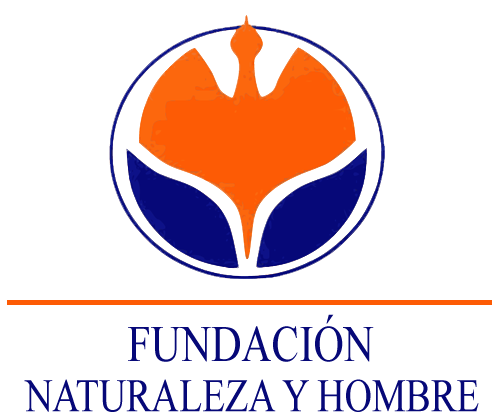LEISURE OFFER
Pasiega Mountain and Eastern Cantabria
Undoubtedly, it is one of the most fascinating places in the Cantabrian Mountain Range, both for its attractive natural values and for its ethnographic importance.
The nature of this mountain area of about 40,000 hectares is characterized by the existence of lush beech forests, sprinkled with holly trees and the emblematic tree of the Cantabrian culture, the yew. On the driest and sunniest slopes there is the Cantabrian holm oak, while the summits are covered by dense Atlantic heaths, sustaining a great biodiversity. On the banks of its rivers, we find beautiful riparian forests, where willow, alder and hawk find the ideal habitat for their development.
These areas are populated by a rich and varied fauna, among which we find the wolf, the boar, the roe deer or the rebeco. However, if the Pasiega and Oriental Montana stands out for something, it is for its enormous ornithological value. In its frequent rocky canyons nest raptors such as the lioned vulture, the alimoche, the golden eagle or the peregrine falcon. Its forests also provide shelter for the well-known woodpeckers, such as the black woodpecker, other raptors such as the hawk and the azor, and small forest birds.
In the late Middle Ages, a people of deep-rooted customs and enigmatic origin settled on this mountain: the Pasiegos. When they arrived, they cleared small areas of forest in order to turn them into pastures for their livestock, and delimited those areas with stones they found on the ground. They used the same material to build their huts, which are an example of popular architecture. Another characteristic feature of the pasiegos is the transhumance. Periodically they performed “the moult”, which consisted of changing huts, with all their belongings and their livestock, in search of the best pastures according to the time of the year. A practice still carried out by some families today, which presupposes the preservation of a semi-nomadic lifestyle, unique in Western Europe, and an authentic living museum of past times..
The peculiar Pasiega way of life has given rise to its own culture, folklore and gastronomy. Example of the latter are the well-known pasiegos: the sobaos and the cheeses.
The Ecomuseum of the River Basins of the Pasiega Mountain and Eastern Cantabria, of the Fundación Naturaleza y Hombre, offers you the opportunity to enjoy the natural and cultural landscapes of this natural area through a series of routes. Along these itineraries, and with the help of specialized guides, private field guards and first-class optical equipment, you will be able to admire and discover the most beautiful and unique landscapes. At the same time, they will be helping to preserve the environment, since all the revenues generated by this activity are used for environmental restoration and conservation.
Routes to other natural areas
In addition to the routes of the Valle del Miera, Valle del Pas and Valle del Pas-Pisueña that we carve below, the Fundación Naturaleza y Hombre offers you the opportunity to visit other emblematic enclaves of Cantabria’s nature. such as the Cantabrian segment of the National Park of the Picos de Europa, the Natural Reserve of the Marismas de Santoña, the Natural Park of Oyambre, the Natural Park of Saja-Besaya and the Mount Hijedo and the Canons of the Ebro, to the south of the region.
For the realization of the routes, first-line equipment will be available at all times: maximum security vehicles and high-quality optical equipment, ideal for a greater enjoyment of landscapes and observations of fauna and flora. Each hiker will have a set of binoculars and there will be a telescope for the group.
On the other hand, the guides of the route will be specialized guards of the Nature and Man Foundation, with a deep knowledge of the area due to the entity’s uninterrupted field work in that area since 1990. The European project INTERREG lllB Waterwaysnet aims to enhance the water-related areas of the Atlantic Arc. This initiative, developed by Fundación Naturaleza y Hombre, with co-financing from the European Regional Development Fund (ERDF) and the Ministry of Environment of the Government of Cantabria, acts on the basins of Pas, Pisueña, Miera and Asón.
OFICINAS CENTRALES FNYH
Dirección: Av. De España Nº 25 Entlo, 39610 El Astillero Cantabria
Tlf: 942 55 91 19 / 679181483
fundacion@fnyh.org
DELEGACIÓN PARA PORTUGAL
Dirección: Rua do Conde de Redondo 8-5º dt 1150-115 Lisboa Tlf: (++351) 919 784 981 crc@erena.pt
CASA DE LA NATURALEZA-MARISMAS DE ALDAY
Dirección: C/ Alday (junto al parking de Valle Real), Maliaño, Cantabria
Tlf: 679 181 472
educacionambiental@fnyh.org
DELEGACIÓN PARA SUDAMÉRICA
Iguazú iguazuconservation@fnyh.org
ECOMUSEO-FLUVIARIUM DE LIÉRGANES
Dirección: C/ Camino Real, 9, 39722 Liérganes, Cantabria
Tlf: 942 52 81 96
fluviarium@fnyh.org
DELEGACIÓN PARA ÁFRICA
Tanzania fundacion@fnyh.org
VIVERO Y CENTRO ETNOBOTÁNICO EL PENDO
Dirección: 39609 Camargo, Cantabria
Tlf: 942 25 88 08
vivero@fnyh.org

ESTACIÓN BIOLÓGICA CAMPANARIOS DE AZABA
Dirección: Camino de La Alamedila, SN 37497 Espeja, Salamanca
Tlf: 923481401
campanarios@fnyh.org
